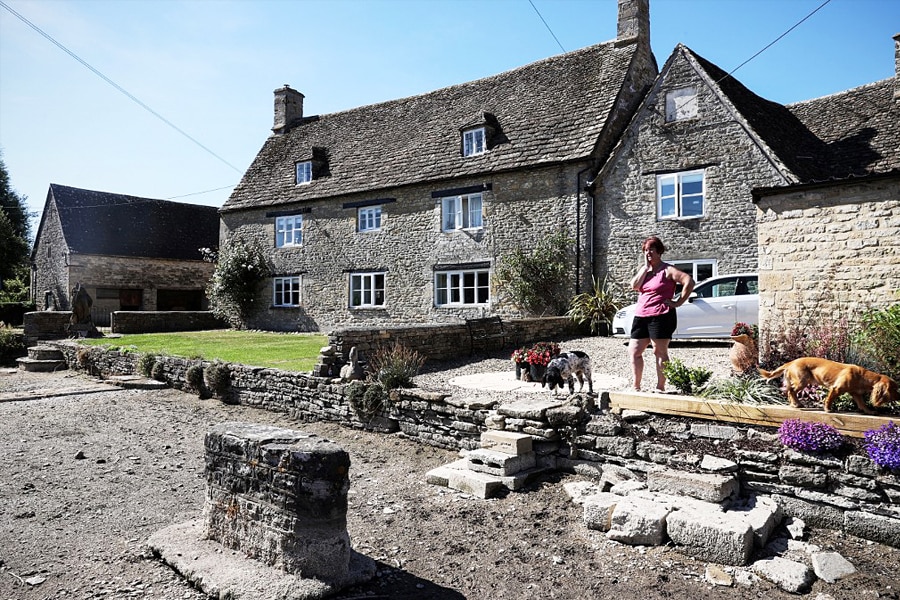
In scorched UK, source of River Thames dries up
The driest start to a year in decades has shifted the source of this emblematic English river several miles downstream, leaving scorched earth and the occasional puddle where water once flowed
 Sheila Ward stands on her driveway looking at the dried river bed of the Infant River Thames, in Ashton Keynes, England on August 8, 2022. Image: ADRIAN DENNIS / AFP
Sheila Ward stands on her driveway looking at the dried river bed of the Infant River Thames, in Ashton Keynes, England on August 8, 2022. Image: ADRIAN DENNIS / AFP
At the end of a dusty track in southwest England where the River Thames usually first emerges from the ground, there is currently scant sign of any moisture at all.
The driest start to a year in decades has shifted the source of this emblematic English river several miles downstream, leaving scorched earth and the occasional puddle where water once flowed.
It is a striking illustration of the parched conditions afflicting swathes of England, which have prompted a growing number of regional water restrictions and fears that an official drought will soon be declared.
"We haven't found the Thames yet," confided Michael Sanders, 62, on holiday with his wife in the area known as the official source of the river.
The couple were planning to walk some of the Thames Path that stretches along its entire winding course — once they can find the waterway's new starting point.







